Unraveling Science Behind Structural Drying: Techniques and Tools
When faced with water damage, whether from a burst pipe, a roof leak, or a natural disaster, one of the key steps in the restoration process is structural drying. This crucial phase involves the removal of excess moisture from building materials to prevent further damage, such as mold growth, and restore the affected area to its pre-loss condition. But what lies beneath the surface of this process? What scientific principles, techniques, and equipment make structural drying a successful endeavor?
In this blog, we will explore the science behind structural drying, diving into the intricacies of the techniques and equipment employed by professionals in the field. By understanding the scientific foundations of this essential restoration process, you will gain a deeper appreciation for the expertise and precision required to efficiently and effectively dry structures.
The Science of Structural Drying
Understanding Moisture and Humidity
When water damage occurs, moisture becomes a primary concern. The moisture content within building materials plays a crucial role in their stability and durability. Understanding moisture and its behavior is fundamental to effective structural drying.
Moisture levels are influenced by various factors, including the source of water damage, the type of building materials involved, and the surrounding environmental conditions. By accurately assessing the moisture content within different materials, professionals can determine the extent of damage and develop appropriate drying strategies.
Humidity, on the other hand, refers to the amount of moisture present in the air. Relative humidity (RH) is a measure of the moisture saturation in the air relative to its maximum capacity at a specific temperature. It is a crucial parameter in structural drying because it affects the evaporation rate of moisture from building materials.
To create the ideal drying conditions, professionals must strike a balance between the moisture content of the materials and the relative humidity of the surrounding air. By monitoring and controlling these factors, they can expedite the drying process and prevent further damage.
Principles of Psychrometry
Psychrometry, the science of studying air and its properties in relation to temperature, humidity, and moisture content, provides the foundation for understanding the complex interplay between moisture and drying.
The concept of dew point is vital in psychrometry. Dew point is the temperature at which the air becomes saturated, causing moisture to condense. When drying structures, professionals aim to maintain the air temperature above the dew point to prevent further condensation and promote evaporation.
Vapor pressure is another crucial aspect of psychrometry. It represents the pressure exerted by water vapor in the air and is directly related to the humidity level. By manipulating vapor pressure through dehumidification, professionals can lower the moisture content within the materials, promoting drying.
Specific humidity refers to the actual amount of moisture present in the air. It is the mass of water vapor per unit mass of dry air. By understanding the specific humidity of the air in the drying environment, professionals can gauge its drying potential and make necessary adjustments to achieve optimal results.
Evaporation and Moisture Extraction
Evaporation is a key process in structural drying. It involves the transformation of liquid water into vapor, effectively removing moisture from building materials. The rate of evaporation depends on factors such as temperature, air movement, and humidity levels.
Moisture extraction complements evaporation by physically removing liquid water and trapped moisture from the affected area. Various techniques, including pumps, wet vacuums, and moisture extraction mats, are employed to extract standing water and excess moisture from materials such as carpets, upholstery, and flooring.
By combining evaporation and moisture extraction, professionals can effectively eliminate moisture from structures, preventing further damage and creating a conducive environment for drying.
In the next section, we will explore the techniques used in structural drying, including moisture mapping and assessment, water extraction methods, dehumidification, and air movement. These techniques, based on the scientific principles discussed, form the backbone of successful structural drying endeavors.
Techniques for Structural Drying
Moisture Mapping and Assessment
Before initiating the structural drying process, moisture mapping and assessment are crucial steps. Moisture mapping involves identifying and documenting the areas affected by water damage. This process helps professionals understand the scope of the damage, determine the extent of moisture saturation, and create a targeted drying plan.
Professionals use various moisture detection tools such as moisture meters, thermal imaging cameras, and moisture probes to assess the moisture content within building materials. These tools provide accurate readings and help identify hidden pockets of moisture that may not be visible to the naked eye. By mapping out the affected areas, professionals can prioritize their drying efforts and ensure a thorough and efficient drying process.
Water Extraction Methods
Effective water extraction is essential to remove standing water and trapped moisture from the affected area. Different water extraction methods are employed based on the severity of the water damage and the types of materials involved.
For significant water intrusion, powerful pumps and extraction units are utilized to remove large volumes of water quickly. Wet vacuums with specialized attachments are effective in extracting water from carpets, upholstery, and other porous materials. Moisture extraction mats, which utilize pressure and absorption, are particularly useful for extracting moisture from hardwood floors and other hard surfaces.
By employing the appropriate water extraction methods, professionals can eliminate standing water and reduce the overall moisture content, laying the foundation for successful structural drying.
Dehumidification
Dehumidification plays a pivotal role in structural drying by removing excess moisture from the air. Dehumidifiers are employed to create an environment with lower humidity levels, facilitating the evaporation of moisture from building materials.
Different types of dehumidifiers, such as refrigerant and desiccant dehumidifiers, are used based on the specific drying requirements. Refrigerant dehumidifiers utilize cooling coils to condense moisture from the air, while desiccant dehumidifiers use moisture-absorbing materials to extract moisture.
The selection of the appropriate dehumidifier is determined by factors such as the size of the affected area, the severity of the water damage, and the prevailing environmental conditions. Professionals calculate the necessary dehumidification capacity based on the moisture load and implement strategic placement of dehumidifiers to optimize drying efficiency.
Air Movement and Ventilation
Air movement and ventilation are critical components of structural drying. By increasing airflow, professionals enhance the evaporation process, expediting the removal of moisture from building materials.
Air movers and fans are strategically positioned to promote air circulation throughout the affected area. These devices facilitate the movement of dry air across damp surfaces, carrying away evaporated moisture. Proper placement and angling of air movers and fans ensure that all areas receive sufficient airflow, leaving no moisture pockets behind.
In addition to air movers, ventilation may be employed to introduce fresh, dry air into the drying environment. Opening windows, using exhaust fans, or utilizing specialized drying techniques, such as negative air pressure, can aid in drying and improve air quality.
By combining air movement and ventilation with other drying techniques, professionals create an environment that maximizes evaporation and accelerates the overall drying process.
In the next section, we will explore the equipment used in structural drying, such as dehumidifiers, air movers, and moisture detection tools. These tools, guided by the scientific principles discussed, enable professionals to effectively and efficiently dry structures after water damage.
Equipment Used in Structural Drying
Dehumidifiers
Dehumidifiers play a vital role in structural drying by removing excess moisture from the air. They are available in various types and sizes, each designed to cater to specific drying needs.
Refrigerant dehumidifiers work by drawing in moist air, cooling it to condense the moisture, and then reheating the air before releasing it back into the environment. These dehumidifiers are highly effective in environments with higher temperatures and relative humidity.
Desiccant dehumidifiers, on the other hand, utilize moisture-absorbing materials, such as silica gel or zeolite, to extract moisture from the air. They are particularly effective in colder environments or situations where lower humidity levels are required.
Choosing the right dehumidifier depends on factors such as the size of the affected area, the extent of moisture damage, and the prevailing environmental conditions. Professionals carefully calculate the necessary dehumidification capacity based on the moisture load to ensure optimal drying performance.
Air Movers and Fans
Air movers and fans are essential tools in structural drying as they promote air circulation and facilitate evaporation. These devices are strategically placed to direct airflow across damp surfaces, expediting the drying process.
Air movers generate a high-velocity stream of air, effectively pushing moisture-laden air away from surfaces and replacing it with drier air. They come in various sizes and types, including axial and centrifugal fans, and are selected based on the specific drying requirements.
Fans, on the other hand, create a consistent airflow across larger areas. They help maintain a steady flow of air, preventing stagnant conditions that can hinder drying progress. By strategically positioning air movers and fans, professionals ensure that all surfaces receive adequate airflow, leaving no moisture pockets behind.
Moisture Detection Tools
Moisture detection tools are instrumental in accurately assessing the moisture content within building materials and monitoring the progress of the drying process. These tools help identify areas of hidden moisture and guide professionals in their drying efforts.
Moisture meters are handheld devices that measure the moisture content of various materials, such as wood, drywall, and concrete. They provide instant readings and allow professionals to determine the effectiveness of the drying process in specific areas.
Thermal imaging cameras, also known as infrared cameras, capture images that visualize temperature differences within materials. By detecting variations in surface temperature, professionals can identify areas with potential moisture problems and take corrective actions.
Moisture probes or sensors are inserted into building materials to directly measure the moisture content. They provide accurate readings and are particularly useful in assessing hard-to-reach areas or areas where surface moisture levels may not be indicative of the overall moisture content.
These moisture detection tools enable professionals to make informed decisions during the drying process, ensuring thoroughness and effectiveness in eliminating moisture.
Conclusion
Understanding the science behind structural drying is crucial for professionals in the restoration industry and property owners dealing with water damage. By comprehending the principles of moisture and humidity, as well as the techniques and equipment used in structural drying, we gain valuable insights into the intricate processes involved.
Moisture mapping and assessment, water extraction methods, dehumidification, air movement, and the use of specialized equipment all contribute to the success of structural drying. By combining these techniques and utilizing appropriate tools such as dehumidifiers, air movers, and moisture detection devices, professionals can efficiently remove moisture, prevent further damage, and restore structures to their pre-loss condition.
With this knowledge, property owners can appreciate the expertise and precision required in the structural drying process. For professionals in the industry, understanding the science behind drying enables them to make informed decisions, implement effective strategies, and provide reliable restoration services.
In the ever-evolving field of structural drying, staying updated with advancements in techniques and equipment is essential. By embracing the science behind structural drying, we can ensure efficient, effective, and successful restoration efforts, bringing comfort, safety, and peace of mind to those affected by water damage.

